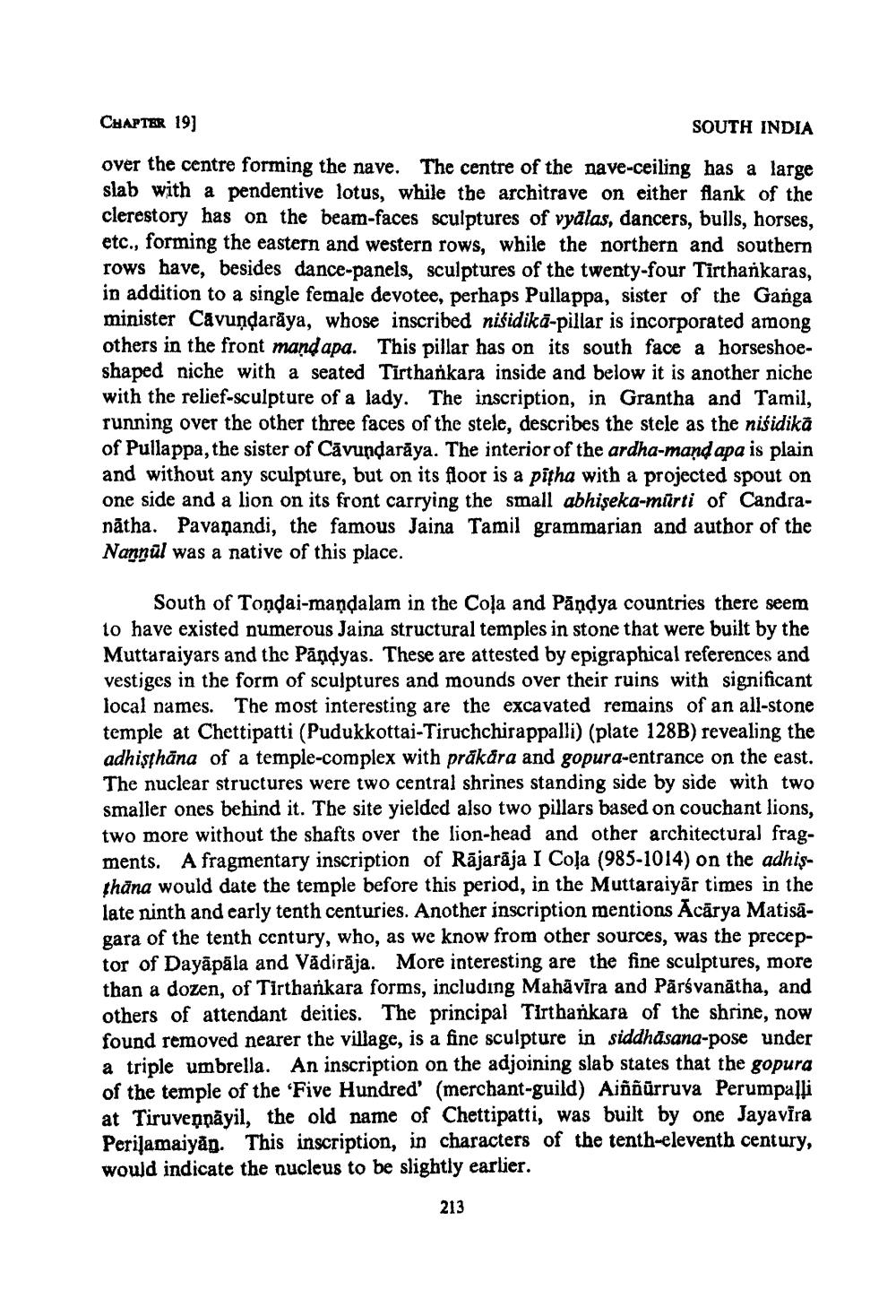________________
CHAPTER 19)
SOUTH INDIA
over the centre forming the nave. The centre of the nave-ceiling has a large slab with a pendentive lotus, while the architrave on either flank of the clerestory has on the beam-faces sculptures of vyalas, dancers, bulls, horses, etc., forming the eastern and western rows, while the northern and southern rows have, besides dance-panels, sculptures of the twenty-four Tirthankaras, in addition to a single female devotee, perhaps Pullappa, sister of the Ganga minister Cavundaraya, whose inscribed nisidikā-pillar is incorporated among others in the front mand apa. This pillar has on its south face a horseshoeshaped niche with a seated Tirthankara inside and below it is another niche with the relief-sculpture of a lady. The inscription, in Grantha and Tamil, running over the other three faces of the stele, describes the stele as the nisidikā of Pullappa, the sister of Cāvundarāya. The interior of the ardha-mand apa is plain and without any sculpture, but on its floor is a pitha with a projected spout on one side and a lion on its front carrying the small abhiseka-murti of Candranātha. Pavanandi, the famous Jaina Tamil grammarian and author of the Nannūl was a native of this place.
South of Tondai-mandalam in the Cola and Pāņdya countries there seem to have existed numerous Jaina structural temples in stone that were built by the Muttaraiyars and the Pāņdyas. These are attested by epigraphical references and vestiges in the form of sculptures and mounds over their ruins with significant local names. The most interesting are the excavated remains of an all-stone temple at Chettipatti (Pudukkottai-Tiruchchirappalli) (plate 128B) revealing the adhişthāna of a temple-complex with prākåra and gopura-entrance on the east. The nuclear structures were two central shrines standing side by side with two smaller ones behind it. The site yielded also two pillars based on couchant lions, two more without the shafts over the lion-head and other architectural fragments. A fragmentary inscription of Rājarāja I Cola (985-1014) on the adhisthāna would date the temple before this period, in the Muttaraiyar times in the late ninth and early tenth centuries. Another inscription mentions Acarya Matisāgara of the tenth century, who, as we know from other sources, was the preceptor of Dayāpāla and Vadiraja. More interesting are the fine sculptures, more than a dozen, of Tirthankara forms, including Mahāvīra and Pārsvanātha, and others of attendant deities. The principal Tirthankara of the shrine, now found removed nearer the village, is a fine sculpture in siddhāsana-pose under a triple umbrella. An inscription on the adjoining slab states that the gopura of the temple of the 'Five Hundred' (merchant-guild) Aiññūrruva Perumpalli at Tiruvennāyil, the old name of Chettipatti, was built by one Jayavira Perilamaiyãn. This inscription, in characters of the tenth-eleventh century, would indicate the nucleus to be slightly earlier.
213




